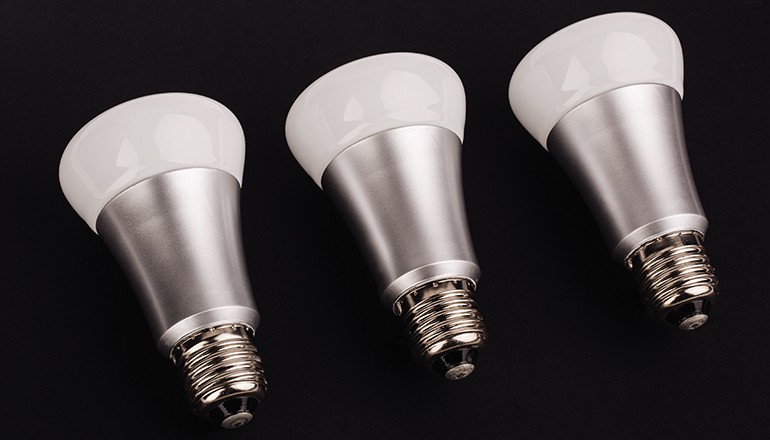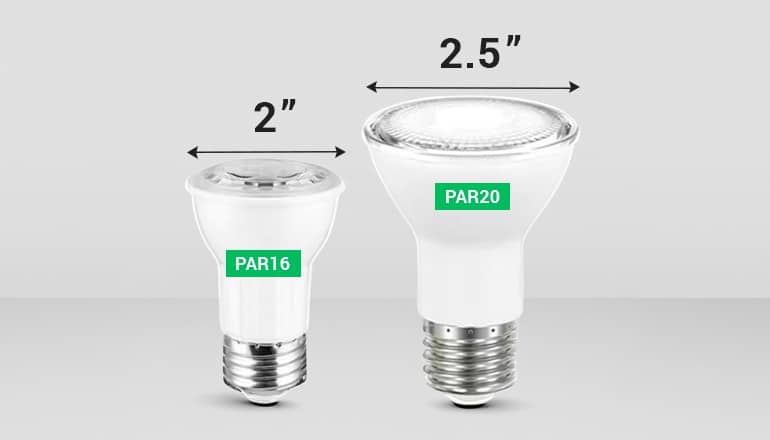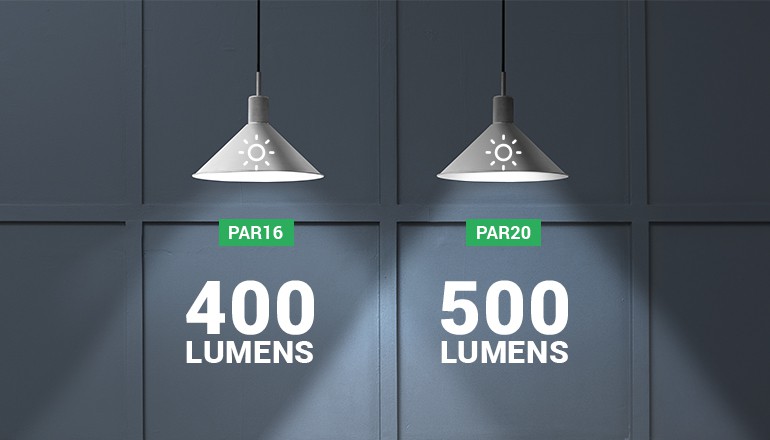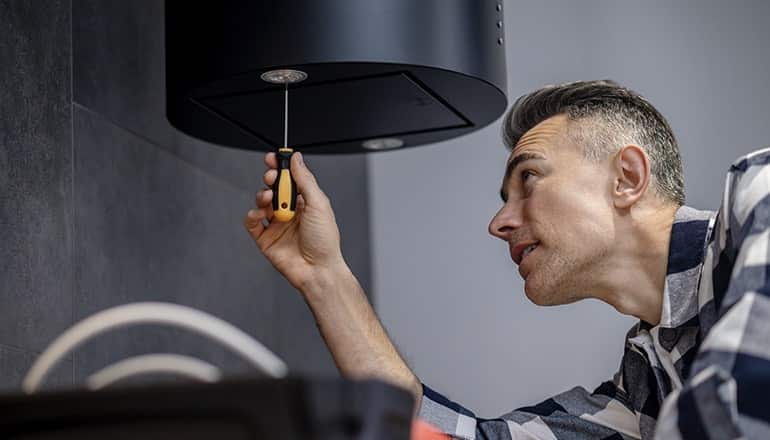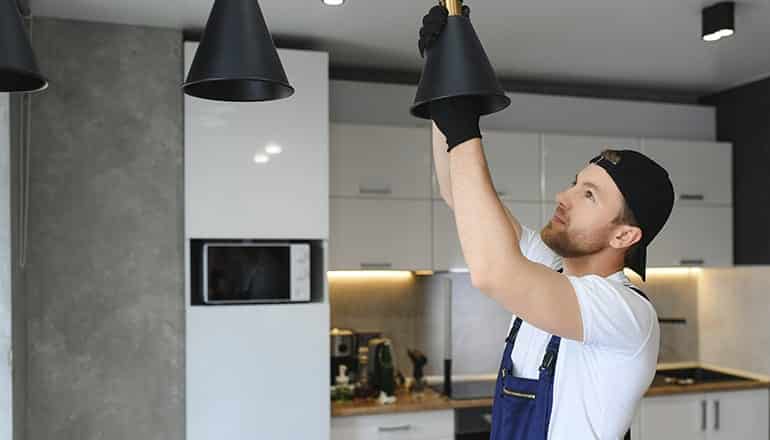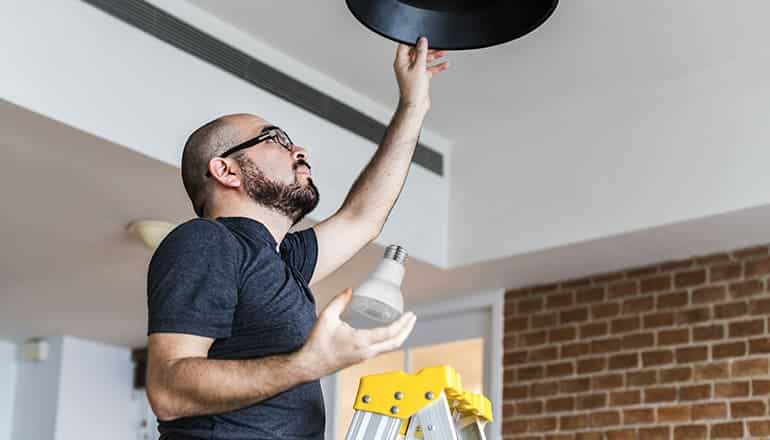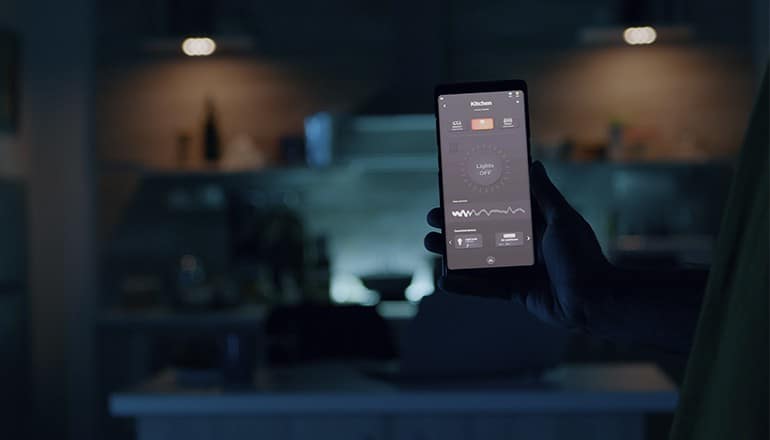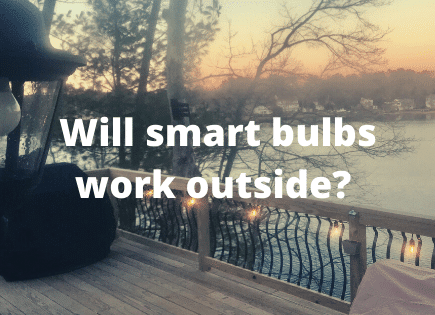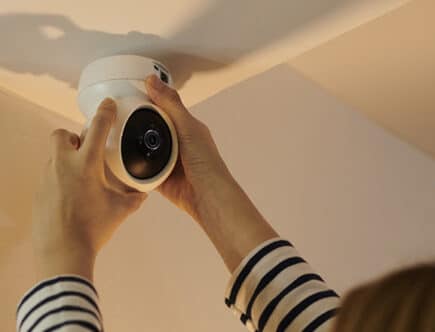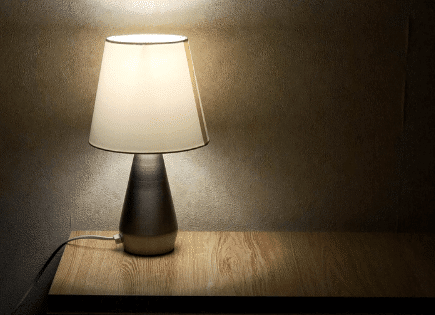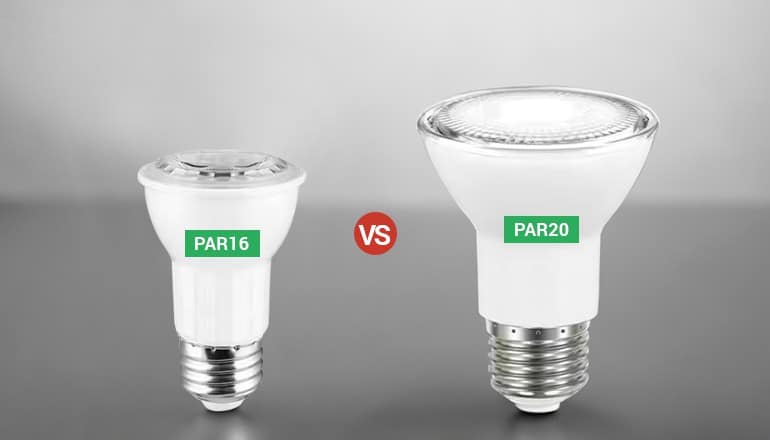
The Key Differences Between Par16 and Par20 Smart Bulbs
Finding the right light bulb can feel a lot like picking food at a huge buffet; there are simply too many choices. Maybe you’ve found yourself looking closely at the labels, wondering, “Should I get a Par16 or a Par20?” without knowing if they are similar apart from their appearance. Honestly, my goal is to clear up this confusion by going over these two styles of smart bulbs.
We will talk about how they look, their sizes, how well they save energy, and the types of light fixtures they work with.
By the end of this post, you won’t have any questions about which light bulb will shine the best in your house! Let’s get started.
What Are Par16 and Par20 Smart Bulbs?
If you enjoy modern home gadgets, you might already know about PAR16 and PAR20 bulbs. But hey, what are they all about? In simple words, these strange-looking numbers and letters give us an idea about the size of light bulbs.
The “PAR” is short for the parabolic aluminized reflector, a phrase describing how the bulb looks – it has a shape like a parabola to focus the light being produced. The numbers 16 and 20 tell us how large they are in measurements of one-eighth of an inch. So, PAR16 is two inches across, and PAR20 comes in at 2.5 inches.
So, let’s get down to the details. Both these types can be “smart,” which means they can link up with your home network for control from far away using programs or voice commands like Alexa or Google Home.
PAR16 smart bulbs are usually put to use when you need focused light because they send out narrower beams compared to larger ones like PAR30 or PAR38. Believe it or not, they’re fantastic as spotlights in places like art galleries or showpieces where their narrow beam of light shines.
Switching to its bigger relative, the PAR30 shares similar features but throws out a broader light, which makes it great for lighting up a whole room or making bigger areas stand out. Seriously, the extra size often results in a more glowing output, providing more light for your money. Right? The PAR30 is fit for many places, from homes to offices, and can be easily controlled with the aid of smart technology. Plus, the smart characteristics let you change the light’s brightness and color temperature with just a few touches on your phone.
Physical Differences in Shape and Size
Let’s talk about the main difference between Par16 and Par20 smart bulbs. The “Par” in the name stands for “parabolic aluminized reflector.” Basically, this is a design element for how the light is given off.
Here’s something you may not know: the number after “Par,” like 16 or 20, gives you a hint about the size. This number shares how big around it is, measured in pieces of an inch. So, if you think about it, a Par16 bulb is about as big as 2 inches, and its larger relative, the Par20 bulb, is about 2.5 inches around.
But it’s more than just size – the shape is important as well. Both kinds have a similar cone shape because of their parabolic design. But if you look closely, you can see small differences.
A normal Par16 usually has sharper edges. This makes the light shine more like a direct spotlight when brightening up your space, whether indoors or outdoors. On another note, because of its larger size, Par20 bulbs spread the light out more.
So choosing the right bulb isn’t just about how much space you have in your fixtures. It’s also about what kind of light you want. Do you have a specific job that needs direct light? Choose the Par16. Is more gentle light what you’re after? Then, Par20 might just be what you need.
Light Output Differences
If you’ve ever tried to read in a place with bad lighting, then you know how important bright light is. Par16 and Par20 light bulbs are not the same when it comes to this.
Par16 light bulbs are usually around 400 lumens – bright enough for single-spot lighting or lighting up small areas. Par20 light bulbs, on the flip side, give out about 500 lumens, so they’re better for lighting up a whole room.
Now, let’s look at color temperature, which we measure in Kelvin (K). Lower numbers mean warm yellowish light, while higher numbers mean cool bluish-white light.
A normal Par16 bulb has a number from 2700K to 3000K – great for setting a comfortable environment. In comparison, most Par20s have a range from 2700K up to a high 6500K. So, if you need to make a workspace feel energetic or copy the feeling of daylight, these could be good choices.
Let’s move from looking at the type of light to where it shines. The beam angle influences how focused or spread out the light might be over an area. A smaller angle makes the light focus like a spotlight; larger angles spread the light out more like floodlights.
Par16 light bulbs, your friendly local choice, usually have a narrow spread of around 36 degrees. But guess what? If you’re after a more spread-out distribution of light, the Par20’s wider beam angle of 40 to 60 degrees is what you’re looking for.
To put it simply, here’s a practical example. Say you want to make an artwork in your living room stand out – the smaller beam and warm color of a Par16 would be perfect here. But for lighting up a workspace in your garage? The brighter, wider beam and cooler light from a Par20 bulb could be just what you need.
An Energy Efficiency Analysis
Let’s talk about saving energy. The U.S. Department of Energy recommends LED bulbs like Par16 and Par20 because they’re more efficient. Now, let’s look into it more deeply.
Basically, these smart bulbs save energy in day-to-day use. For example, a normal Par16 bulb uses around 4 to 6 watts, while a Par20 unit uses about 7 to 9 watts. At first, this small difference may not seem very important, but over time, it adds up.
Imagine having ten lamps on in your house for an average of three hours each day. Switching from Par20s to Par16s could save you between 30 and 90 watt-hours every day. There is no need to say that it can make a big difference to your monthly electricity bill.
The next thing to think about is how long the bulbs last – because the longer they last, the less often you have to buy new ones. Both types can last about 25,000 hours on average. However, some people have reported their Par16 bulbs last a bit longer than the larger Par20s. The truth is sometimes, less really is more.
So, after looking at all these factors, you’d think that the smaller Par16 might be the best choice for people who want to save money and energy. But hang on a minute – being efficient isn’t just about how much power a bulb uses or how long it lasts.
Your own habits, how much light you need, and even how well your house is insulated can affect which bulb is best for you. So don’t make a snap decision – take some time to think about these things before you choose.
Compatibility with Different Fixtures
When thinking about Par16 and Par20 smart bulbs, their fit is very important. Both types have differences; let’s talk through what sets them apart.
- Par16 bulbs are smaller and work better in a variety of light fixtures. You can often find them highlighting artwork or hidden in tiny corners for gentle lighting.
- On the other hand, Par20 bulbs are bigger and work best for lighting up a whole room. They spread a lot of light around and can light up bigger spaces effectively.
All types of PAR lamps use the same E26 screw-in base that’s common in North America, and both our bulb types do, too. This fact means that they will screw into most home sockets easily without special adapters or changes to your current fixtures. Well, there’s something you need to pay attention to.
The specific needs of your fixture may affect your choice of bulb type. A large lampshade can hide a Par16 bulb. A recessed downlight that’s too tight might pinch a Par20’s style. You need to consider the depth and width of your fixture when choosing between these two smart bulb options:
If your fixtures are shallow, like some track lights or hanging lights – think about choosing a slim-fit Par16. For fixtures with more space, like ceiling cans or large lamps – the chunkier Par20 might be the best choice. Anyway, no matter if you’re trying to light up an entire room or create the perfect spotlight for your favorite painting, both these smart bulbs can be useful. But remember: brightness and color are not the only things you should consider; compatibility is also important.
Cost Analysis for Both Bulb Types
The price tag on the box isn’t the whole story with smart bulbs. You need to think about how often you’ll be changing the bulb and how much power it’s going to use.
The folks over at the U.S. Department of Energy say that LED bulbs like the Par16 and Par20 use a lot less power than the old type of light bulbs, at least 75% less power. Interesting, right? Let’s look a little deeper into how these two types of bulbs compete when it comes to saving money.
Bulbs can cost anything from a little bit to a lot, depending on which company made them and what kind of features they have. As a rule, though, you might find that Par20s are usually a bit more expensive compared to the smaller Par16s. However, keep in mind that sometimes paying a touch more money to start with could end up saving you lots over time.
Just to be clear, a big part of the total cost comes from how long each bulb can last before needing to be replaced. The longer a bulb can last, the fewer extras you’ll need to buy over time. Both the Par16 and the Par20 have seriously long lifespans compared with the older type of bulbs. We’re talking about 25 thousand hours for most LEDs if we go by what the EPA says. Even with this, there is a little variation between different bulbs, but for the most part, they’re both pretty good when it comes to how long they can last.
Anyone knows that brighter light might need more power, which will make your electricity bill bigger over time. Both Par16 and Par20 bulbs can put out a lot of light, but they do it without using much power at all. So, while you might pay a smidge more to get a Par20’s brighter light, remember that old, normal light bulbs would cost a lot more to use.
If you want to compare costs between these two types of smart bulbs, both types have strong points and can save you a lot of money over time compared with the older type of bulbs. The best one for you will depend on what you need. For example, whether it fits your light socket or if you want a really bright light. With these bulbs, the cost isn’t the only thing to consider.
Smart Features of Par16 and Par20 Bulbs
The special features in both Par16 and Par20 bulbs are truly changing the game. These bulbs do more than just light up – they bring in the possibility of making your home smarter.
These smart bulbs don’t need extra tools. They can connect to your Wi-Fi network for control by a phone app, and they even include Bluetooth as an extra perk. This lets you control them even if you don’t have internet.
On top of that, you also get Bluetooth as a plus. It’s perfect for when you want to control your bulb quickly without needing internet.
Your home lights can now get along with other devices. Par16 and Par20 smart bulbs work well with smart home systems like Amazon Alexa or Google Assistant. You can tell Alexa or Google to shut off the lights without having to get up from your comfy bed.
The days of just flicking lights on or off are over. With these new light sources, you are in total control of how bright the light is and the color of the light right from where you are. You can dim the lights for the perfect movie night feeling or change the color to match the daylight.
One great feature is designing your own lighting scene where one press sets up multiple lights together – like warm colors for dinner parties and bright whites during work time, all changeable based on what you like.
So, we see tech has pushed us to a stage where we don’t just use lightbulbs – now we work together with them. These Par16 and Par20 smart bulbs are proof of this change. It’s not only about lighting now; it’s about making your life better.
Which Should You Choose: Par16 or Par20 Smart Bulbs?
When we have to pick between Par16 and Par20 smart bulbs, the choice depends on what kind of light you want and need. Each light bulb type is good at something. You see, Par16 bulbs are just right for making artwork stand out, while Par20 bulbs spread out light well and are good for living rooms. How much energy they use and how much they cost are important things to think about, too. Both these types of bulbs use less energy than regular old light bulbs, but there is a difference in just how much energy they use and how much they cost initially.
Even though Par20 bulbs might cost more in the beginning, you could end up saving more money with them in the future.
You also need to think about if the bulb will work with the lights you already have in your home. The bulb you choose should fit your lamp or light fixture just right, whether it’s a small desk lamp or bigger ceiling light. It’s not really about which kind of bulb is always better. Instead, take a good look at your home’s lighting and make a smart choice based on what we’ve talked about here.
When you have all the facts, you can make the best decision and get the smart bulb that’s perfect for your home, giving you light that’s just as you want it!
Do you have any questions for me? Which smart bulbs are you thinking of getting? Please share with us in the comments section; I’d love to hear from you!

